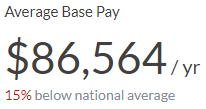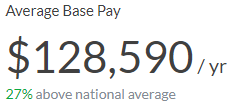As someone new to programming, the terms front end vs. back end can be pretty confusing. You often hear those words thrown around when you’re with others who are discussing their job positions or generally complaining that they do more than the other position. It can start getting a little awkward when front end developers are competing with back end developers about who’s better while you have no idea what’s going on. But if you just nod and smile when you hear those words because you’re too afraid to ask, then I’ve written this specifically for you.
Front End Vs. Back End
The difference between front end vs back end developers is simple. Front end developers design what you can see on a website, i.e. the look and feel, whereas back end developers create all the functionality that you can’t see, i.e. the databases, models, APIs, etc.
I like to compare websites to the human body. The front end is like the face of the website, it’s everything you can easily see and access. Whereas, the back end is the internal organs keeping it alive and functioning. Without the back end, the front end is completely useless but without the front end, the website is hard to look at and interact with. Like a skinless, faceless person.
Front End Salary vs Back End Salary
In terms of salary, there isn’t a vast difference. I live near Chicago, where front end developers make around $74,000 and back end developers make around $87,000 on average. However, this is actually slightly below the national average. If you look at some other cities around the United States, you see a different salary range.
Average Front End Developer salary in Chicago (Courtesy of Glassdoor.com):

Average Back End Developer salary in Chicago:

If we look at the salaries of front end vs back end developers in San Jose, California, for instance, we see a totally different average. Front end developers make roughly $34,000 more in San Jose than they do in Chicago. The trend for back end developers is the same too. Back end developers make roughly $42,000 more in San Jose than in Chicago! These numbers especially rise once we begin looking as senior front end vs back end developers.
Average Front End Developer salary in San Jose (Courtesy of Glassdoor.com):

Average Back End Developer salary in San Jose:

How To Develop on the Front End
Front end developers primarily use HTML, CSS, and Javascript to create a website’s user interface as well as other frameworks such as AngularJS, React, and jQuery. They are responsible for conveying an organization’s message through the website’s appearance. Although some front end developers work with website designers to decide certain element properties, i.e. color scheme, layout, fonts, in smaller organizations those decisions could be left to the front end developer.
That being said, front end developers require a bit of creativity. Even if they aren’t required to make creative decisions, they must work with the parameters they are given to create a website that pleases their clients as well as the client’s customers.
This is where the terms UI and UX come in. UI stands for user interface while UX stands for user experience. As important as creating a visually appealing website is, it’s even more important to create one that a customer can easily navigate with as little frustration as possible.
This is where things like a website’s responsiveness and mobile design come into play. A developer must have an understanding of what makes a website slower, what navigation elements work best for the client’s target audience, and how the website will look across different browsers and devices. In essence, a front end developer is responsible for conveying information to a viewer.
How To Develop on the Back End
As for a back end developer, they focus primarily on scripting, database, and a website’s architecture. Their skillset is rooted in server-side programming languages such as Java, Python, and/or Ruby as well as MySQL and Oracle.
They build and maintain the technology used to keep a website functioning. back end developers are considered the facilitators between a database and a browser.
While a front end developer gives information out, a back end developer is responsible for taking in and organizing the information given to them by the viewer. This could involve writing APIs, creating libraries, and working on data structures. The back end is considered to be the more logistical side of web development.
Although the back end may not require the same level of drafting and vision as the front end, the workload between the two ends can be considered pretty equal. In perspective, they are really two sides of the same coin. They each rely on each other in order to do their respective jobs and serve an equal purpose.
Full-Stack Developers
There is an obvious difference in the types of people more suitable front end vs back end. However if you find yourself as someone who enjoys both creative thinking and logistic handling, there is a position that combines them both known as full-stack developers. They would be totally in charge of creating and running the site with full control of its layout.
Also, the average full-stack developer salary is higher. It’s roughly $90k in Chicago on average and of course higher if we were to look in San Jose. The salary is usually higher to compensate for the larger workload and broad experience.
Average Full Stack Developer salary in Chicago (Courtesy of Glassdoor.com):

Front End, Back End, or Dead End
Not only are front end and back end developers paid well, but they’re also highly in-demand careers. If you choose a career in front end, back end, or even full-stack development, then you’re making a great choice.
I hope reading this article has given you a broader understanding of the nature of front end vs back end development. Ideally, it’s a jumping-off point to further explore possible career paths in the field of web development.

